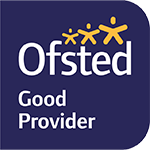Sprowston Infant School Overall Curriculum Intent – Six Cs
In addition to ensuring children achieve well in national curriculum subjects, we include experiences, knowledge, skills, dispositions and contexts that we feel are important for our children in our curriculum.
As a whole school community, we created our ‘six Cs’, the wider aims of our curriculum. We use the ‘six Cs’ to develop effective, well rounded, lifelong learners. These are the qualities we aim to develop in our children, and they underpin what we do from Nursery through to Year 2.
We do not teach the 6 Cs as standalone concepts, rather they are gradually developed in the children over time, due to the way we design teaching and learning in the school. In this sense they are ‘baked in’ to the curriculum pupils experience at Sprowston.
The Six Cs and how we design our curriculum to enable them
|
Knowledge/skills/dispositions (intent) |
How we achieve it (implementation) |
|
|
Craftsmanship |
Working to produce quality, not just completing tasks. Redrafting work, continuous improvement. Producing less things but of higher quality. |
Adults develop children’s independence and put the onus for solving problems on to the children. This builds resilience and willingness to commit to seeing things through. Timetabling gives children the time and space to pursue and spend time on their own interests. Critiquing and redrafting work, following modelling. Teaching persistence in early years. Story scribing in YR, writing in Y1 – instant feedback and improvement. |
|
Creativity |
Finding their own solutions to problems. Finding new ways of doing things. Connecting different areas of learning. |
Children have time and space to experiment, try things out and find new ways of doing things. Open-ended resources that are accessible all the time. Opportunities are not limited to adults’ thinking, children can do things not pre-planned. The emphasis on independence means they will not wait for an adult but be more likely to find their own creative solutions. The cross-curricular organisation of our curriculum promotes seeing connections between different areas, a key facet of creativity. The teacher ‘wonders’, draws out thinking but doesn’t dictate it. |
|
Collaboration |
Developing the skills for working together. Negotiating, resolving disagreements. Valuing others’ ideas. |
Environment promotes collaboration. Adults model collaboration by interacting with children in their play. Children have some choice in how and where they work, as well as who they work with. Adults model kindness and empathy in the way they speak to children and each other, children are encouraged to use verbal and emotional skills to resolve problems. Lots of teaching conflict resolution, social skills in YR. |
|
Communication |
Developing language and vocabulary. Presenting to different audiences. Building confidence to express themselves. |
The emphasis on collaborative work gives necessity and opportunity to communicate with their peers regularly. Children present their learning to different audiences e.g. story scribing. Stage areas YR/Y1 to perform to others. Use of PECS and signing across school to aid communication. Early interaction groups, speech and language input. |
|
Curiosity |
Pupils want to keep learning. They are keen to pursue their own ideas. They will challenge their own thinking. |
Environment and ‘book hooks’ stimulate children and open up possibilities for exploration and investigation. Meaningful themes children can engage with over time e.g. sustainability. Non-fiction books in classroom related to challenges – encourage children to find out more. Children’s contributions are valued, learning follows children’s interests where possible. Adult interactions promote curiosity – ‘I wonder…’. |
|
Confidence |
Children pursue their own ideas. They take ownership of their learning. They demonstrate independence. |
‘Coaching’ approach from staff, enabling children to build confidence and become independent – ‘I wonder…’. Specific feedback helps link praise to effort and builds a growth mindset. Modelling mistakes and creating a culture where sensible risk-taking is encouraged. Redrafting work helps children to see that a first draft is not perfect and mistakes are fine as you can go back and work on them. |


